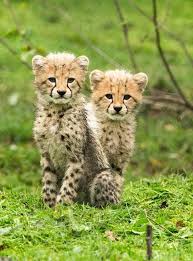The Beauty of Wildlife Captured: A Look at Stunning Wildlife Photos
Wildlife photography is a captivating art form that allows photographers to capture the beauty and essence of animals in their natural habitats. From majestic lions prowling the savannah to delicate butterflies fluttering in a meadow, wildlife photos provide a glimpse into the fascinating world of nature.
One of the most challenging aspects of wildlife photography is the unpredictability of animal behavior. Photographers must have patience, skill, and a keen eye to capture that perfect moment when an animal displays its unique characteristics or engages in a captivating activity.
Through wildlife photos, viewers can appreciate the diversity of life on Earth and gain a deeper understanding and appreciation for the natural world. These images can evoke emotions ranging from awe and wonder to empathy and concern for the conservation of endangered species.
Wildlife photographers often travel to remote locations, endure harsh conditions, and spend hours waiting for the perfect shot. Their dedication and passion shine through in each photograph, telling a story that transcends language barriers and connects people across cultures.
Whether it’s an intimate close-up of a bird in flight or a sweeping landscape featuring herds of wild animals, wildlife photos have the power to inspire, educate, and raise awareness about the importance of preserving our planet’s biodiversity.
So next time you come across a stunning wildlife photo, take a moment to appreciate the artistry behind it and the incredible beauty of nature that it captures.
6 Essential Tips for Capturing Stunning Wildlife Photos
- Use natural light for better colors and details.
- Get down to the animal’s eye level for more engaging shots.
- Capture animals in their natural habitat for authenticity.
- Be patient and observe animal behavior to anticipate shots.
- Avoid using flash to prevent startling or disturbing wildlife.
- Respect wildlife by keeping a safe distance and not disrupting their activities.
Use natural light for better colors and details.
When capturing wildlife photos, utilizing natural light can significantly enhance the colors and details of your images. Natural light provides a soft and flattering illumination that brings out the true essence of the subject, showcasing its natural beauty in the most authentic way possible. By harnessing the nuances of natural light, photographers can achieve vibrant colors, intricate details, and a sense of depth that artificial lighting often cannot replicate. Embracing natural light not only elevates the visual appeal of wildlife photos but also creates a more immersive and engaging viewing experience for audiences, allowing them to connect more deeply with the wonders of the natural world.
Get down to the animal’s eye level for more engaging shots.
To capture more engaging shots in wildlife photography, it is essential to get down to the animal’s eye level. By positioning yourself at the same level as the animal, you create a more intimate and immersive perspective that allows viewers to connect with the subject on a deeper level. This technique not only enhances the visual impact of the photograph but also helps convey the animal’s unique characteristics and emotions more effectively. Getting down to eye level with wildlife can result in compelling images that truly bring the viewer into the animal’s world, fostering a sense of closeness and empathy between the audience and the subject.
Capture animals in their natural habitat for authenticity.
To capture authentic and compelling wildlife photos, it is essential to photograph animals in their natural habitat. This approach allows photographers to showcase the true behaviors, interactions, and environment of the animals, creating a more genuine and immersive viewing experience for the audience. By respecting the natural habitats of wildlife and observing them in their element, photographers can convey a sense of connection and respect for the creatures they are photographing, resulting in images that truly reflect the beauty and diversity of the animal kingdom.
Be patient and observe animal behavior to anticipate shots.
To capture compelling wildlife photos, it is crucial to exercise patience and keen observation of animal behavior. By taking the time to study how animals interact in their natural habitats, photographers can anticipate moments that showcase the essence and character of the subject. This approach not only leads to more impactful shots but also allows photographers to immerse themselves in the fascinating world of wildlife, resulting in images that tell a story and evoke a sense of connection with nature.
Avoid using flash to prevent startling or disturbing wildlife.
When capturing wildlife photos, it is crucial to avoid using flash to prevent startling or disturbing the animals. Flash can not only startle the wildlife but also disrupt their natural behavior and habitats. By relying on natural light and adjusting your camera settings accordingly, you can capture stunning and authentic images of wildlife without causing any harm or disturbance to the animals. Respecting the natural environment and the well-being of the wildlife should always be a top priority for wildlife photographers.
Respect wildlife by keeping a safe distance and not disrupting their activities.
Respecting wildlife by maintaining a safe distance and refraining from disrupting their activities is essential in wildlife photography. By observing animals from a respectful distance, photographers not only ensure their own safety but also minimize stress and disturbance to the animals. This approach allows for more natural and authentic behavior to be captured in photos, preserving the integrity of the wildlife’s habitat and ensuring their well-being remains a top priority.

